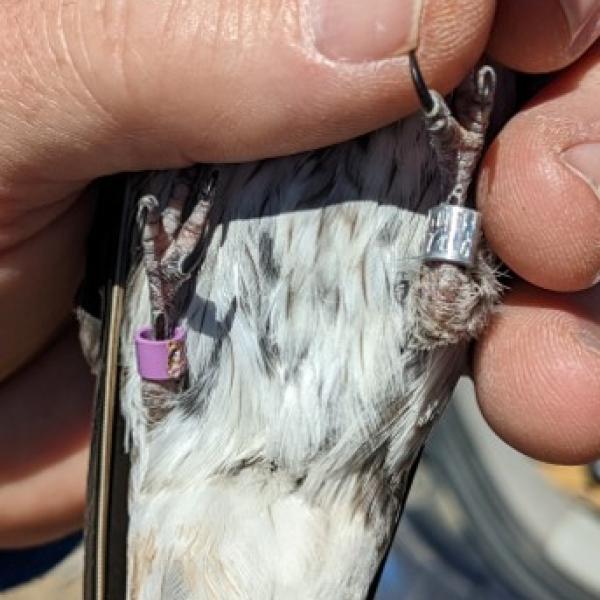Did you know that the largest and most consistent population of western purple martins (Progne subis arboricola) in Santa Clara County is on Midpen lands? The migratory species was thought to have disappeared from the county until Midpen began the restoration of Mount Umunhum and saw the acrobatic avians overhead and nesting in old utility poles.
In the years following this regionally significant discovery, Midpen has been monitoring purple martin breeding activity and providing a variety of nesting structures to help meet state conservation goals for the species. Western purple martins are listed as species of special concern in the state and only 100-220 pairs are estimated to live in the range from the Bay Area to Santa Barbara.
“We hold ourselves responsible for stewarding and managing the natural resources found within our preserves – which include many special status wildlife species like the purple martin,” explained wildlife biologist, Karine Tokatlian.
Unlike their eastern counterparts, western purple martins prefer to nest in natural habitats in forest and woodland areas, like natural cavities in tree snags (dead but still upright trees) or wooden utility poles. As secondary cavity nesters, they often use holes created by other species like woodpeckers, a behavior similar to western bluebirds and some swallow species.
When Midpen first began building and installing nesting structures, multiple designs were used to test what would be most successful in attracting purple martins. “This is truly an adaptive management project,” Tokatlian said. “Each nesting season, we learn a little bit more from the previous year and use those findings to inform how we work to support the species.”
This year, staff built on the success of last year’s most-used habitat designs, known as stacked cavities. Staff replaced several nesting boxes with the stacked cavity designs to provide more opportunities for successful egg hatching and eventual chick fledging. Several of the cavities have been outfitted with a live camera system to monitor nesting activity within artificial cavities, giving an inside look at the whole process.
These videos, taken in late June 2024, show three separate purple martin nests. Eggs typically incubate for 15-16 days. After hatching, both parents will feed their young with dragonflies, mayflies, butterflies and other flying insects. The young will fledge (develop feathers large enough for flight) between 26-32 days after hatching.

Bird banding
Staff also began tracking individuals through bird banding, a process by which unique identification bands are fitted around the bird’s leg. Western purple martins display fairly reliable site fidelity, meaning they return to the same locations after migrating thousands of miles south for the winter. With the bands, researchers can get better and more detailed information on the exact individuals nesting near Mount Umunhum.
While its exciting to see the purple martins use these Midpen-built habitats, Tokatlian noted that ideally, the species would be managed back to sustainable levels and able to thrive without human intervention. “We don’t necessarily want to be in the business of artificially housing the species. There is need to balance their ecological preference for natural habitat, and to encourage the selection of natural habitat rather than becoming dependent on human provided artificial habitat. That's one of the reasons we designed the artificial cavities the way that we did.”
Midpen plans to continue monitoring the nests and share findings with our partner agencies. Staff continue to meet with a Western Purple Martin Working Group to share expertise on the habitat enhancements and advocate for additional research into the subspecies.

